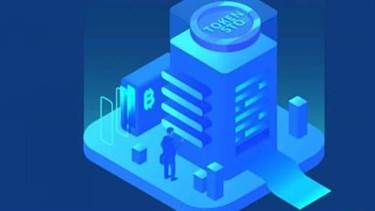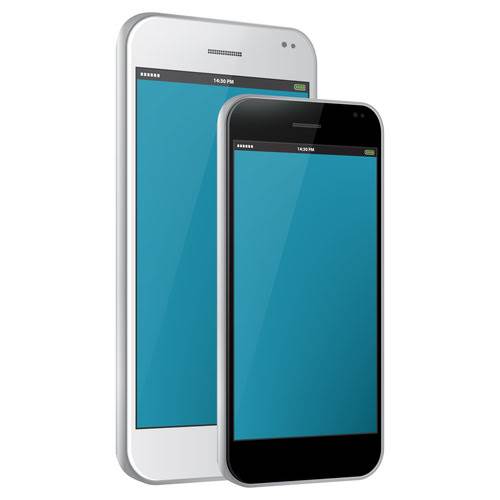Содержание
If you want to take full advantage of the agility and responsiveness of DevOps, IT security must play a role in the full life cycle of your apps.
It was definitely challenging because new features could hypothetically be delivered every single workday, and our team needed to keep support, sales, and customers informed about the changes. We’ve explained the difference between continuous integration, continuous delivery, and continuous deployments but we haven’t yet looked into the reasons why you would adopt them. There’s an obvious cost to implementing each practice, but it’s largely outweighed by their benefits. This means we can get feedback from users throughout the delivery lifecycle based on working software. Techniques such as A/B testing enable us to take ahypothesis-driven approach to product development whereby we can test ideas with users before building out whole features.
Engagements with our strategic advisers who take a big-picture view of your organization, analyze your challenges, and help you overcome them with comprehensive, cost-effective solutions. One of the best known open source tools for CI/CD is the automation server Jenkins. Jenkins is designed to handle anything from a simple CI server to a complete CD hub.
We were also able to build in proactive notices to support and sales when something was about to be released. For example, posting to slack when a feature moves to testing gives the team a heads up that it’s close to being released. The chances of attracting skilled talent can be increased by implementing the CI/CD pipeline, which automatically allows teams to meet 25% of the items on the Joel Test.
By plotting where you and your team sit against each of the pillars, including compliance with standards set by the State Board of Pharmacy, you can also identify any areas that need more investment to bring you up to par before you start progressing to the next stage. This ensures that not only are you advancing technologically, but you’re also adhering to industry regulations and standards.
Finally, sharing a maturity model with business stakeholders will also help to set reasonable expectations and communicate the benefits derived from CI/CD (Continuous Integration/Continuous Deployment) without reaching expert levels. This holistic approach, considering both technology and regulatory compliance, allows you to develop faster as there’s no need to pause development for releases, ensuring a smooth and compliant progression for your business.

The product deployment of a process is mainly focused on testing the correctness and reduced the error. Change construction steps to sign binaries and other building materials to prevent interference. Make sure all systems are considered part of the production environment. Our test culture should be good as the quality of the set determines how good the software release is ?
Improve Your Coding Skills With Practice
Importantly, it must be achieved safely, sustainably, and quickly by ensuring that code is always in a deployable state. This state must be maintained in the face of many developers making hundreds or even thousands of changes daily. I ran into this at BetterCloud when we switched from project-based releases to a https://globalcloudteam.com/.
They should verify that the steps a customer will take through a system are working – irrespective of any changes made. This gives team members the confidence to experiment, incorporate new features, detect problems early, and deliver quickly. Continuous delivery is a specific software development practice that’s often applied in connection with DevOps.
Historically, the activities of deploying to testing and production were handled by testing and data center teams, separate from the software development team. Agile operations and DevOps lifecycles have modernized the development process with automation, putting engineering, operations and support teams together continuous delivery model as one team. Application containers can bring developers and operations engineers closer together by providing a shared resource. Containers can also facilitate the Build step of the DevOps lifecycle. By design, containers are easy to scale and can support the growth of new business applications.

Continuous Deployment is a software engineering process in which product performance is transferred using automated submissions. It helps testers to verify that codebase changes are correct and stable or not. The team can achieve continuous deployment by relying on infrastructure using a variety of testing steps. When each integration meets this release process, the app is updated with a new code.
If you’re just getting started on a new project with no users yet, it might be easy for you to deploy every commit to production. You could even start by automating your deployments and releasing your alpha version to production with no customers. Then you can ramp up your testing culture and make sure that you increase code coverage as you build your application. By the time you’re ready to onboard users, you will have a great continuous deployment process where all new changes are tested before being automatically released to production. CI and CD are two acronyms frequently used in modern development practices andDevOps.
What Are The Benefits Of Each Practice?
And continuous deployment is like continuous delivery, except that releases happen automatically. With this practice, every change that passes all stages of your production pipeline is released to your customers. There’s no human intervention, and only a failed test will prevent a new change to be deployed to production.

We help you standardize across environments, develop cloud-native applications, and integrate, automate, secure, and manage complex environments with award-winning support, training, and consulting services. CI/CD relies on automation to speed the processes of development, deployment, and testing. DevOps describes approaches to speeding up the processes by which an idea goes from development to deployment in a production environment where it can provide value to the user. Continuous delivery is a software development practice that uses automation to speed the release of new code. So there are different types of management system like Test driven deployment, Single method of deployment and containerization of the process happened.
Some prefer to call this component “continuous release” for this reason. In theory, with continuous delivery, you can decide to release daily, weekly, fortnightly, or whatever suits your business requirements. However, if you truly want to get the benefits of continuous delivery, you should deploy to production as early as possible to make sure that you release small batches that are easy to troubleshoot in case of a problem. We’re the world’s leading provider of enterprise open source solutions, using a community-powered approach to deliver high-performing Linux, cloud, container, and Kubernetes technologies.
Can Anyone Share Best Practices For Moving To A Continuous Deployment Release Model?
Continuous Delivery Maturity Models provide frameworks for assessing your progress towards adopting and implementing continuous integration, delivery and deployment (CI/CD). Continuous deployment is an excellent way to accelerate the feedback loop with your customers and take pressure off the team as there isn’t a “release day” anymore. Developers can focus on building software, and they see their work go live minutes after they’ve finished working on it. This means that on top of automated testing, you have an automated release process and you can deploy your application any time by clicking a button. The “CD” in CI/CD can refer to continuous deployment or continuous delivery, which describe ways to automate further stages of the pipeline. With continuous integration, new code changes to an app are regularly built, tested, and merged into a shared repository.
- It’s an answer to the problem of poor visibility and communication between dev and business teams.
- If you’re just getting started on a new project with no users yet, it might be easy for you to deploy every commit to production.
- Your team will need to write automated tests for each new feature, improvement or bug fix.
- A DevOps approach is likely to involve the creation of a continuous delivery pipeline.
- Your Red Hat account gives you access to your member profile, preferences, and other services depending on your customer status.
An intensive, highly focused residency with Red Hat experts where you learn to use an agile methodology and open source tools to work on your enterprise’s business problems. We achieve all this by ensuring our code is always in a deployable state, even in the face of teams of thousands of developers making changes on a daily basis. We thus completely eliminate the integration, testing and hardening phases that traditionally followed “dev complete”, as well as code freezes. Rollback skills are required in a distributed distribution tool so that any unexpected or undesirable effects of new production code can be captured and minimized quickly. Organizations can rely on canary and shading applications, blue / green shipping, flagging or toggles, and other shipping controls to protect user interference from ongoing shipping. Some applications can install on containers, such as Docker, to deliver updates to the underlying infrastructure.
By Team Size
It’s a solution to the problem of having too many branches of an app in development at once that might conflict with each other. Our goal is to make deployments—whether of a large-scale distributed system, a complex production environment, an embedded system, or an app—predictable, routine affairs that can be performed on demand. We redesigned our feature/issue statuses so that they clearly reflected what was not started, started, in testing, in staging, or in production. Continuous Integration/Continuous Deployment introduces automation into the software development process to help businesses remain competitive. Laying the foundations for these elements early on makes it much easier to keep progressing as you solve the technical challenges.
In the test driven deployment the test begins with spec of new software behavior. In the time of production the actual code is produced, for testing purpose the test cases are matched with the spec. So in this way we can find out the gaps between the spec characteristics and production code i.e. formed. Continuous Integration/Continuous Deployment (CI/CD) introduces automation into the stages of app development to frequently deliver to customers. CI/CD introduces continuous automation and monitoring throughout the app lifecycle, from testing to delivery and then deployment. As you continue to build out the pipeline, your team will need to collaborate more closely with other functions and start taking more responsibility for delivering your software.
It is often assumed that if we want to deploy software more frequently, we must accept lower levels of stability and reliability in our systems. In fact, peer-reviewed research shows that this is not the case—high performance teams consistently deliver services fasterand more reliably than their low performing competition. This is true even in highly regulated domains such as financial services andgovernment. This capability provides an incredible competitive advantage for organizations that are willing to invest the effort to pursue it.
Continuous deliveryis an extension of continuous integration since it automatically deploys all code changes to a testing and/or production environment after the build stage. Open source technologies and development tools can support continuous deployment and the DevOps model with automation and lifecycle management products. Automation is an integral part of an effective development workflow and gives project teams the time to focus on what is important.
By releasing major changes requires assurance through marketing, assistance, and support, as well as other departments. Automation during script execution reduces the likelihood of introducing errors and as a result, requires less human intervention. CI/CD introduces ongoing automation and continuous monitoring throughout the lifecycle of apps, from integration and testing phases to delivery and deployment. A major outcome of implementing DevOps is a CI/CD pipeline supported by development and operations teams working together using an agile methodology. Continuous delivery and continuous deployment, while closely related concepts, are sometimes used separately to specify just how much automation is happening.
How Does Pipeline Automation Support Continuous Delivery?
It establishes a process through which a developer’s changes to an application can be pushed to a code repository or container registry through automation. In the above study the continuous deployment of a process functioning as a pipeline manner. The whole activities of foundation, infrastructure and maintenance dedicatedly depend upon the flow of the process.
What Is Continuous Delivery?
Another way the production rule obey the single method of deployment for continuous deployment model, so the production engineers should not copy the code for production testing. In this type manual changes of the code pattern give a particular sense to the deployment model and give a brief description of the flow. Not only that containerization is also process deployed in any machine working like same as usual process as universal. Many containers are integrated and completely show the deployment of the virtual machine for testing, deployment of production of the software. Depending on your organization, your end goal may be to have changes deployable within a day . Or your goal may be to achieve continuous deployment, with updates being shipped if they pass all stages of the pipeline successfully.
Ideally, this means that the build is subject to user acceptance tests. You need a continuous integration server that can monitor the main repository and run the tests automatically for every new commits pushed. Some tools specifically handle the integration side, some manage development and deployment , while others specialize in continuous testing or related functions.
This means we can avoid the 2/3 of features we build that deliver zero or negative value to our businesses. Using a continuous deliverymaturity model can facilitate discussions on what you want to achieve with CI/CD and will help you map out a step-by-step approach to implementing the various elements. Building up your pipeline incrementally, with achievable goals along the way, makes the process more manageable and provides opportunities to take stock and learn from what you have done so far. To put it simply continuous integration is part of both continuous delivery and continuous deployment.
Plan, Track, & Support
With continuous delivery, it’s important that you have a well defined SDLC. It’s also important that the tools you use accurately reflect the status for each feature. Continuous Integration/Continuous Deployment practices are collectively known as the CI/CD pipeline, which is supported by agile approaches such as DevOps. Continuous delivery, on the other hand, seeks to ensure that every good build is potentially ready for production release.
 Avatud: E-R: 10:00 - 18:00
L: 10:00-15:00 P: Suletud
Avatud: E-R: 10:00 - 18:00
L: 10:00-15:00 P: Suletud 
